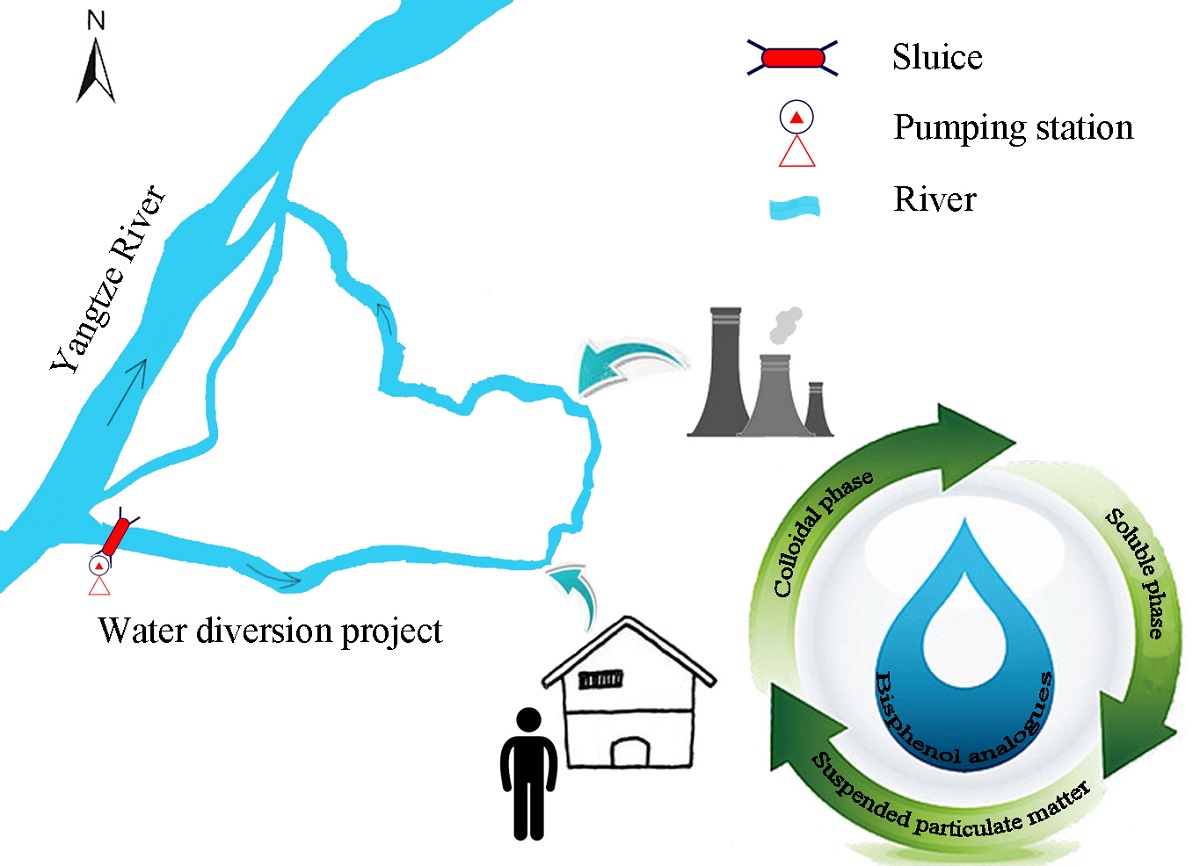Because of the widespread use of bisphenol analogues (BPs) as the alternatives to bisphenol A (BPA), they have attracted considerable attention for health risk in aquatic ecosystems. The occurrence and distribution of six BPs were researched in soluble phase (< 5 kDa), colloidal phase (5 kDa to 1 µm) and suspended particulate matter (SPM > 1 µm) in a water diversion project of Nanjing, China. Except for bisphenol Z, all BPs were detected in the two or three phases, the total concentrations of detected BPs were 161-613 ng/L, 5.19-77.2 ng/L and 47.5-353 ng/g for the soluble phase, colloidal phase and SPM, respectively. Among the detected compounds, BPA still the dominant BPs in the soluble and colloidal phases, followed by BPS, while BPAF was the major contaminant in SPM, followed by BPA. The mean contribution proportions of colloids were 1-2 orders of magnitude higher than SPM, suggesting that colloids have an obvious impact on regulating BPs’ environmental behaviors. In terms of spatial distribution, although the water diversion project could reduce the pollution levels of BPs, which might further affect the ecological security of the Yangtze River.

